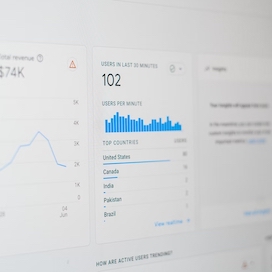Written by Fani Sánchez
Índice
- What is the 500 error code?
- How does it work?
- Types of Errors 500
- Error 500: Internal error
- Error 501: Not implemented
- Error 502: Bad gateway or wrong gateway
- Error 503: Service unavailable or service not available
- Error 504: Gateway timeout or timeout time exceeded
- Error 505: Version not supported or HTTP version not supported
- Error 506: Variant Also Negotiates or Variant Not Negotiated
- Error 507: Insufficient Storage
- Error 509: Bandwidth limit exceeded
- Error 510: Not extended or not extended
What is the 500 error code?
The 500 error code is the one shown and offered by the server when it fails to complete an application or request that at first appears to be correct.
When a request is made to the server and it fails before serving it, it may be due to several reasons, not just one. Therefore, we can find different error codes 500 that will identify the different types of reasons for which they have occurred and why the request has not been completed.
We include all of them with the numerical format 5xx, that is to say from the hundred of 500, therefore they begin with the 5 followed by two digits which will indicate which type of error makes it impossible to complete a request.
How does it work?
Normally, when the server cannot complete a request normally, it transmits an error code, and as we have seen, if unexpected conditions are found before serving the request that prevent it from being completed, this error will be 500. In short, it is an error that is used as a wildcard by the server, which, unable to find the exact reason, communicates to the robot or web browser that the request could not be completed.
At the user level, the user will encounter this error message when trying to open the web page.
At the SEO level, these error messages are collected on the server and at the same time Google Search Console includes them in its console, so we can detect the problem, possible error patterns, classify them, and motivate a recommendation to help solve the problem.
Types of Errors 500
There is a 500 error typology that identifies at what level the errors occur:
Error 500: Internal error
When the server encounters an unexpected condition of an extraneous nature that prevents it from completing the request.
Error 501: Not implemented
The web server does not understand the flow of data sent by the client. These are communicated through the variables Options, Get, Head, Post, Put, Delete, Trace and Connect. When it is not done through one of them, the server will probably not understand it and will generate that 501 error of not implemented.
They are not the most common and occur when the servers are old and are not updated for the latest variables.
Error 502: Bad gateway or wrong gateway
The server is merely a gateway between the client (browser or robot) and the content of the URL located on the server. When there is no protocol agreement between the two, we get this 502 error. That is, it is due to poor IP communication between computers.
This is usually due to an ISP overload problem or a bad internal internet connection.
Occurs when the web server is not available to handle the request due to a temporary overload or for maintenance reasons. It is a failure that usually occurs temporarily due to server saturation or maintenance.
Normally you should therefore check if it is being updated or treated and is out of service for that reason, or if it is due to an overload, assess the possibility if this is repeated to improve the server.
Error 504: Gateway timeout or timeout time exceeded
When the server exceeds the time it has estimated as optimal to solve a request or request, it will offer us this 504 error. Excessively slow communication between browser and server is occurring.
We should review the web content and the server operation to find out the reason and solve it, perhaps the page is too heavy and exceeds the time required for downloading, or the amount of data is such that the expected processing time is exceeded (eternal listings without pagination), etc.
Error 505: Version not supported or HTTP version not supported
The HTTP protocol specified by the client, browser or bot is not supported by the server. This may be due to an update problem, the version of the protocol that the browser is trying to use is different from the server’s version and therefore does not tolerate it.
Normally it will be due to the age or non-updating of the server, so we will surely have to update the server or renew it in case it is constantly repeated and we have it outdated.
Error 506: Variant Also Negotiates or Variant Not Negotiated
This is because the server is not correctly configured.
Error 507: Insufficient Storage
You will encounter this error when the server has no more free memory. Probably, an application could not locate the system resources necessary for it to run.
We will have to clean up the server’s hard disk to free up space, or expand the server’s RAM memory.
Error 509: Bandwidth limit exceeded
It occurs when the bandwidth allocated to your hosting has been exhausted. When we contract an external server, we contract with it a certain bandwidth, so if we exceed it, this 509 error will occur.
To solve it we can wait for the end of the month and reset our bandwidth account or contract a higher bandwidth with the increase in price that this entails.
Error 510: Not extended or not extended
When the web server does not support the extension attached to the HTTP request received, it will produce this 510 error.
Most likely we need to upgrade the web server because it has become obsolete.

